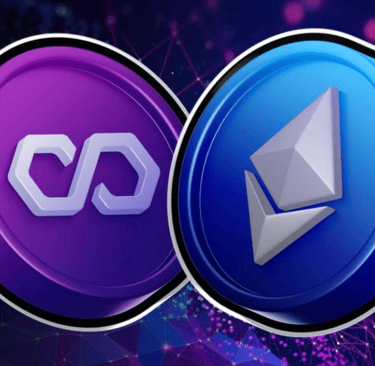Polygon’s Layer 2 Magic: Why MATIC is Vital for Ethereum’s Future


The blockchain world is a dynamic ecosystem, continually evolving with innovations that promise to address its long-standing issues. Among these, Polygon’s Layer 2 Magic has emerged as a pivotal solution, capturing the attention of developers and investors alike. At the core of this innovation is MATIC, the cryptocurrency that fuels Polygon’s ecosystem, promising to be a linchpin for Ethereum’s scalability and efficiency. This post will delve into the intricacies of how Polygon and MATIC are reshaping the future of Ethereum, offering solutions to its most pressing challenges.
Understanding the Scalability Challenge Ethereum Faces
Ethereum has been a trailblazer in the realm of decentralized applications (dApps) and smart contracts, yet its scalability issues present formidable obstacles. The network’s limited transaction processing capacity often results in congestion and exorbitant gas fees during peak times, which can degrade user experience and stymie broader adoption. While the transition to Ethereum 2.0 holds promise, it is a gradual evolution. In this interim period, Layer 2 solutions like Polygon offer a timely response to these scalability challenges, enabling higher transaction throughput without compromising the principles of decentralization.
What Makes Polygon’s Layer 2 Solution Unique
Polygon distinguishes itself as a premier Layer 2 solution through its innovative use of sidechains and its versatile, modular framework. This design allows for an interconnected blockchain ecosystem, where transfers and interactions between different networks are seamless. Unlike other Layer 2 solutions, Polygon’s architecture facilitates greater interoperability, empowering developers to build scalable dApps without being limited by Ethereum’s mainnet constraints. Its modularity offers a range of scaling solutions and tools, enabling developers to tailor applications to specific needs while preserving Ethereum’s security assurances. By bridging multiple blockchain networks, Polygon fosters a more cohesive and efficient decentralized application environment.
How MATIC Powers Polygon’s Ecosystem
MATIC plays a crucial role in fueling Polygon’s ecosystem, serving as more than just a transactional currency. It underpins a robust tokenomics model that ensures economic stability and incentivizes network participation. Validators are rewarded with MATIC for securing the network, a process facilitated through staking. This mechanism not only fortifies the system against malicious activities but also maintains its integrity.
In addition to staking, MATIC is used to pay transaction fees within the Polygon network, providing a seamless experience for users and developers alike. Governance is another critical function powered by MATIC; token holders can vote on key protocol decisions, fostering a decentralized approach to network management. This multifaceted utility enhances the ecosystem’s liquidity and security, making MATIC indispensable to Polygon’s continued growth and success.
By integrating these functionalities, MATIC ensures that the network operates efficiently and securely, empowering developers to build and scale dApps without the limitations posed by Ethereum’s mainnet. Its growing prominence reflects its foundational role in achieving a more scalable and user-friendly blockchain environment.
Security and Stability Concerns Addressed
In the ever-evolving blockchain landscape, security and stability are non-negotiable. Polygon fortifies its platform through a robust proof-of-stake consensus mechanism, which significantly enhances resilience against potential attacks. Complementing this is the added security derived from Ethereum’s own security layer, creating a formidable dual-layer defense system. Advanced cryptographic techniques are at the core of Polygon’s security strategy, ensuring that the network remains impenetrable to vulnerabilities. Regular audits and continuous security assessments further reinforce the network’s integrity.
For developers and users, this rigorous approach to security translates to a trustworthy environment where applications can be built and scaled confidently. The assurance of a stable and secure platform alleviates common concerns, making Polygon an attractive option for those wary of potential risks in the blockchain space. Through these measures, Polygon not only addresses but also preempts security and stability issues, establishing itself as a reliable cornerstone in the cryptocurrency ecosystem.
Real-World Applications and Adoption
Polygon’s Layer 2 Magic is propelling blockchain technology into various industries by addressing key limitations. In the financial sector, Polygon facilitates the creation of decentralized finance (DeFi) applications that require high throughput and low transaction costs, making it feasible to offer services like lending, borrowing, and trading to a broader audience. The gaming industry is another significant beneficiary, where Polygon enables the development of blockchain-based games that can handle thousands of transactions per second, providing an uninterrupted and engaging user experience.
Moreover, non-fungible tokens (NFTs) have found a robust platform in Polygon, allowing creators to mint, sell, and trade digital assets without prohibitive gas fees. The network’s inherent flexibility has drawn numerous projects, each exploring unique applications that benefit from Polygon’s scalability and efficiency. This growing ecosystem is further bolstered by strategic partnerships, including collaborations with major blockchain platforms and tech companies, accelerating mainstream adoption.
From real estate to supply chain management, Polygon is proving its versatility and capability to revolutionize various sectors by providing a scalable, secure, and economically viable blockchain solution. Its impact is evident in the increasing number of dApps and projects choosing Polygon as their preferred Layer 2 solution.
The Future of Ethereum with Polygon’s Layer 2
The horizon for Ethereum shines brighter with Polygon’s Layer 2 solution at the helm. By tackling scalability issues head-on, Polygon enables Ethereum to maintain its competitive edge, even as the blockchain landscape grows more complex and crowded. This partnership not only alleviates current network strain but also sets the stage for future innovations. Polygon's integration within Ethereum's ecosystem creates a synergistic environment where developers can push the boundaries of what’s possible, driving the creation of more advanced and user-friendly decentralized applications.
As the broader Ethereum community continues to embrace Polygon, we can expect a wave of new opportunities and breakthroughs. The combined strengths of Ethereum and Polygon will foster a robust, scalable, and efficient blockchain infrastructure. This evolution is crucial for Ethereum’s ambition to be the backbone of decentralized applications and financial systems worldwide. MATIC, the driving force behind Polygon, will remain integral to this growth, ensuring that Ethereum not only meets but exceeds the demands of an ever-evolving digital economy.
